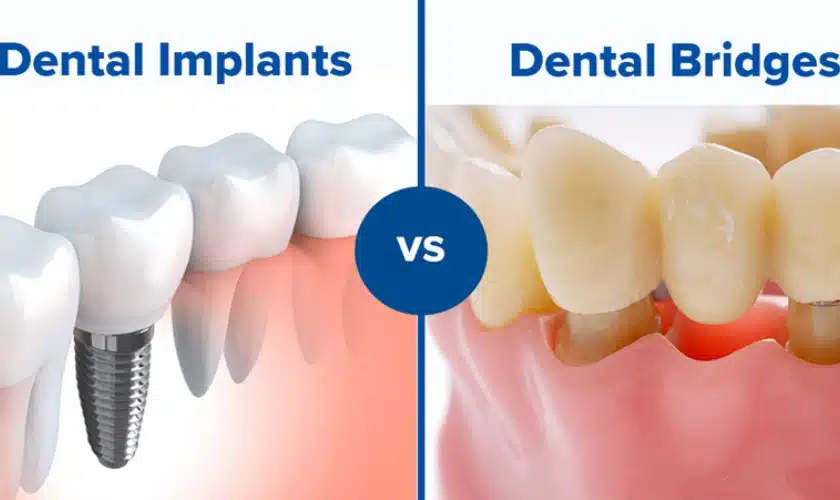How Dental Sense can Save You Time, Stress, and Money.
How Dental Sense can Save You Time, Stress, and Money.
Blog Article
The Facts About Dental Sense Uncovered
Table of ContentsExamine This Report about Dental SenseSome Ideas on Dental Sense You Need To KnowA Biased View of Dental SenseGetting My Dental Sense To Work
are medical devices operatively dental implanted into the jaw to restore a person's ability to eat or their appearance. They supply support for fabricated (phony) teeth, such as crowns, bridges, or dentures. When a tooth is lost as a result of injury or disease, an individual can experience issues such as fast bone loss, defective speech, or changes to eating patterns that result in pain.Oral implant systems contain a dental implant body and oral implant abutment and might also consist of a joint fixation screw. Root canal procedure. The dental implant body is operatively inserted in the jawbone instead of the tooth's root. The oral implant abutment is generally connected to the dental implant body by the abutment addiction screw and extends with gums into the mouth to sustain the attached fabricated teeth
(https://linktr.ee/dentalsense1)Framework of The Oral Implant System selecting dental implants, talk to your dental provider concerning the potential advantages and dangers, and whether you are a candidate for the treatment. Things to take into consideration: Your general health and wellness is a vital consider figuring out whether you are a great candidate for oral implants, how much time it will take to recover, and the length of time the dental implant may remain in location.
Smoking may impact the healing process and lower the lasting success of the implant. The healing process for the implant body may take numerous months or longer, during which time you generally have a momentary abutment instead of the tooth. the dental implant procedure: Carefully comply with the dental hygiene guidelines given to you by your dental service provider.
Things about Dental Sense
Implant failing can cause the requirement for an additional operation to take care of or replace the dental implant system. Restores the capability to chew Recovers aesthetic look Helps keep the jawbone from diminishing because of bone loss Maintains the health of the surrounding bone and periodontals Assists maintain surrounding (neighboring) teeth secure Improves quality of life Damage to surrounding natural teeth during implant placement Injury to the surrounding tissues during surgical procedure, such as sinus opening Injury during surgical treatment (for example, fracture of surrounding jawbone) Poor function, such as feeling like the teeth do not attack with each other generally A sensation that the tooth hangs or turning in position arising from a joint screw loosening up Implant body failure (looseness of the dental implant body) because of systemic infection, which may be more probable in people with unchecked diabetes due to regional infection in bone and periodontals supporting the implant body as a result of postponed recovery, which might be more likely in individuals web link who smoke Problem cleaning up the gums around the implant, resulting in inadequate dental health Without treatment periodontal disease Post-surgical numbness due to nerve impingement or damages Always notify health care companies and imaging professionals that you have oral implants before any magnetic vibration imaging (MRI) or x-ray treatments.
FDA is not aware of any kind of damaging events reported for MRI or x-ray procedures with oral implants. Dental implants systems are generally constructed from products that comply with global consensus criteria of the International Organization for Standardization (ISO) or ASTM International. These criteria have details of what makes a safe material.

An oral implant is a structure that changes a missing tooth. With screw-like tools, the doctor inserts an implant right into the jawbone, and it functions as an anchor for a synthetic tooth, called a crown. A tool called an abutment links the synthetic tooth to the dental implant. The crown is customized to fit the individual's mouth and match the shade of their teeth.
Getting The Dental Sense To Work
Some individuals are not qualified for dental implant surgery. It is for dental specialists to operate individuals with: severe illnessuncontrollable metabolic diseasebone or soft tissue condition or infectionIf these concerns are solved, an individual can have the surgery. In, dental specialists refrain from operating individuals with: If people with any of the above undertake dental implant surgery, there is a greater risk of the dental implant failing.

Dental implant surgical treatment is a customized process. Give you time to heal. Affix the post and final crown, bridge or denture.
Next, your surgeon will thoroughly position the dental implant right into your jaw. Your specialist will rearrange your periodontals and shut the incision with stitches. If your implant is near the front of your mouth, your dental expert will make a short-lived tooth for you to put on up until you recover. That means, you will not have a space in your smile while you recover.
Dental Sense for Beginners
Throughout the healing stage, your jawbone ought to fuse to the oral implant. This process can take anywhere from 3 to nine months.
As soon as your dental implant heals, your dental practitioner can attach the joint (tiny adapter article) and your final reconstruction (crown, bridge or denture). This typically takes regarding one hour to complete and may require a 2nd minor surgical procedure. You shouldn't feel any pain during your oral implant treatment since your service provider will utilize medication to numb your gums.
Report this page